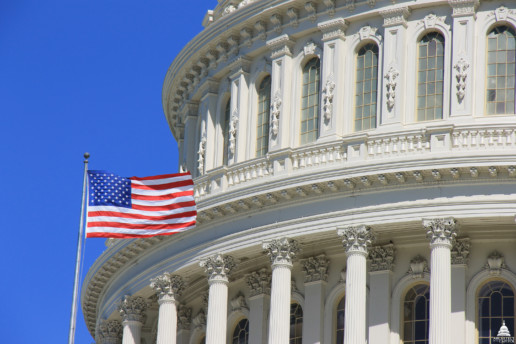Health Law’s 10 Essential Benefits: A Look At What’s At Risk In GOP Overhaul
Great article from Kaiser Health News about all the changes that could be coming with the ACA overhaul by Michelle Andrews
As Republicans look at ways to replace or repair the health law, many suggest shrinking the list of services insurers are required to offer in individual and small group plans would reduce costs and increase flexibility. That option came to the forefront last week when Seema Verma, who is slated to run the Centers for Medicare & Medicaid Services in the Trump administration, noted at her confirmation hearing that coverage for maternity services should be optional in those health plans.
Maternity coverage is a popular target and one often mentioned by health law critics, but other items also could be watered down or eliminated.
There are some big hurdles, however. The health law requires that insurers who sell policies for individuals and small businesses cover at a minimum 10 “essential health benefits,” including hospitalization, prescription drugs and emergency care, in addition to maternity services. The law also requires that the scope of the services offered be equal to those typically provided in employer coverage.
“It has to look like a typical employer plan, and those are still pretty generous,” said Timothy Jost, an emeritus professor at Washington and Lee University Law School in Virginia who is an expert on the health law.
Since the 10 required benefits are spelled out in the Affordable Care Act, it would require a change in the law to eliminate entire categories or to water them down to such an extent that they’re less generous than typical employer coverage. And since Republicans likely cannot garner 60 votes in the Senate, they will be limited in changes that they can make to the ACA. Still, policy experts say there’s room to “skinny up” the requirements in some areas by changing the regulations that federal officials wrote to implement the law.
Habilitative Services
The law requires that plans cover “rehabilitative and habilitative services and devices.” Many employer plans don’t include habilitative services, which help people with developmental disabilities such as cerebral palsy or autism maintain, learn or improve their functional skills. Federal officials issued a regulation that defined habilitative services and directed plans to set separate limits for the number of covered visits for rehabilitative and habilitative services.
Those rules could be changed. “There is real room for weakening the requirements” for habilitative services, said Dania Palanker, an assistant research professor at Georgetown University’s Center on Health Insurance Reforms who has reviewed the essential health benefits coverage requirements.
Oral And Vision Care For Kids
Pediatric oral and vision care requirements, another essential health benefit that’s not particularly common in employer plans, could also be weakened, said Caroline Pearson, a senior vice president at Avalere Health, a consulting firm.
Mental Health And Substance Use Disorder Services
The health law requires all individual and small group plans cover mental health and substance use disorder services. In the regulations the administration said that means those services have to be provided at “parity” with medical and surgical services, meaning plans can’t be more restrictive with one type of coverage than the other regarding cost sharing, treatment and care management.
“They could back off of parity,” Palanker said.
Prescription Drugs
Prescription drug coverage could be tinkered with as well. The rules currently require that plans cover at least one drug in every drug class, a standard that isn’t particularly robust to start with, said Katie Keith, a health policy consultant and adjunct professor at Georgetown Law School. That standard could be relaxed further, she said, and the list of required covered drugs could shrink.
Preventive And Wellness Services And Chronic Disease Management
Republicans have discussed trimming or eliminating some of the preventive services that are required to be offered without cost sharing. Among those requirements is providing birth control without charging women anything out of pocket. But, Palanker said, “if they just wanted to omit them, I expect that would end up in court.”
Pregnancy, Maternity And Newborn Care
Before the health law passed, just 12 percent of health policies available to a 30-year-old woman on the individual market offered maternity benefits, according to research by the National Women’s Law Center. Those that did often charged extra for the coverage and required a waiting period of a year or more. The essential health benefits package plugged that hole very cleanly, said Adam Sonfield, a senior policy manager at the Guttmacher Institute, a reproductive health research and advocacy organization.
“Having it in the law makes it more difficult to either exclude it entirely or charge an arm and a leg for it,” Sonfield said.
Maternity coverage is often offered as an example of a benefit that should be optional, as Verma advocated. If you’re a man or too old to get pregnant, why should you have to pay for that coverage?
That a la carte approach is not the way insurance should work, some experts argue. Women don’t need prostate cancer screening, they counter, but they pay for the coverage anyway.
“We buy insurance for uncertainty, and to spread the costs of care across a broad population so that when something comes up that person has adequate coverage to meet their needs,” said Linda Blumberg, a senior fellow at the Health Policy Center at the Urban Institute.
See the original article Here.
Source:
Andrews M. (2017 February 21). Health law's 10 essential benefits: a look at what's at risk in GOP overhaul [Web blog post]. Retrieved from address https://khn.org/news/health-laws-10-essential-benefits-a-look-at-whats-at-risk-in-gop-overhaul/
How Obama’s last healthcare legislation is further hurting the ACA’s chances of survival
Due to the most recent changes President Obama made to the ACA before leaving office, ACA repeal is looking more and more like a possibility. Take a look at this great article from Employee Benefits Advisors to see how the changes will affect the ACA repeal process by Craig Hasday
President Trump is delivering on what many had viewed as an unrealistic campaign promise: The repeal of Obamacare is right on track. In finalizing the budget, the GOP can now line out any ACA items with a fiscal impact, thanks to an executive order issued by Trump on his first day in office. By lining out the individual and employer penalty and eliminating some of the ACA taxes – voila – the ACA is gone.
The market reforms will stay, however (no pre-existing conditions, guaranteed issue coverage and dependents covered to age 26). But there is an enormous “if.” If the insurance carriers stay in the market.
One of the reasons the ACA is not working is the adverse selection issue. Insurance carriers must take all comers, and since the individual penalty for not obtaining coverage is full of loopholes, and not large enough to dissuade the young and healthy from rolling the dice, the risk pool has performed horrifically. That should be no surprise – I have been writing about it for years; a few examples here, here, here and here.
But if the individual penalty is repealed, it is going to get even worse. The healthy are going to leave and the risk pools will be left with a lot of expensive sick people who love the idea of guaranteed coverage, premiums and unlimited maximums.
The problem with QSEHRAs
The prior Congress and former President Obama didn't help matters with the passage of the 21st Century Cures Act, which was signed into law in December 2016. This law allows small employers who don't offer a group health plan to create a Qualified Small Employer Health Reimbursement Arrangement (QSEHRA). Employers can provide money to employees on a tax-free basis to pay for individual health insurance policies and to reimburse employees for certain medical expenses. This is going to make the small group pools worse and, my guess is, increase adverse selection even more.
Given the losses incurred to date and the additional selection being imposed on the healthcare system, the big question is will the health insurance carriers stay in the marketplace? If mainstream carriers refuse to offer policies – BOOM – the system implodes.
To quote the best show on Broadway, “Hamilton,” I would love “to be in the room where it happens.” This is going to be interesting to watch.
See the original article Here.
Source:
Hasday C. (2017 February 06). How Obama's last healthcare legislation is further hurting the ACA's chances of survival [Web blog post]. Retrieved from address https://www.employeebenefitadviser.com/opinion/how-obamas-last-healthcare-legislation-is-further-hurting-the-acas-chances-of-survival
9 questions employees have about ACA – and how to answer them
Have your employees been asking more questions about the ACA? Check out this great article from HR Morning about some of the question your employees might ask and how to answer them by Christian Schappel
Even under the Trump administration, the Affordable Care Act (ACA) is still a real, enforceable law. You already know this. But do all of your employees?
Chances are, once employees start getting their ACA-mandated 1095 forms from you in the next few weeks, some of them are going to have questions — à la: What is this? I thought Trump did away with Obamacare.
Here are some of the questions employees are asking — and are bound to ask — along with how HR can answer them:
1. Didn’t Trump repeal Obamacare?
No. While he has promised to “repeal and replace” the ACA, all he has done so far is sign an executive order that directs federal agencies to grant certain exemptions from the law, as well as waive any requirements that they’re able to by law.
Surely, the executive order will eventually weaken some parts of the ACA — and maybe even lead to some repeals — but nothing concrete has happened yet. As a result, employers still have to comply with the “play or pay” mandates, and individuals still have to carry health insurance or risk penalties.
2. Didn’t Republicans in Congress start repealing the law?
No. Republicans in Congress don’t have the votes they need to repeal the ACA outright. They can’t avoid a Democratic filibuster.
As a result, what they have done is state their intention to attack the law through a process known as reconciliation. It’ll allow Republicans to vote on budgetary pieces of the law — like the individual mandate (which is imposed with a tax) and healthcare subsidies — without giving the Democrats a chance to filibuster.
The problem for Republicans, though, is that reconciliation limits how they can reshape (or repeal) Obamacare.
3. Then when will Obamacare be repealed?
All you can tell employees right now is that it hasn’t happened, and there is no clear answer on when (or even if) it will happen in its entirety.
However, Republicans recently made two things clear at its recent annual retreat in Philadelphia:
- They plans to use the reconciliation process to “repeal and replace” parts of the law.
- The GOP will bring a final reconciliation package to the floor of the House of Representatives by late February or early March.
Chances are, we’ll find out more once Trump’s cabinet picks — specifically his pick to lead the Department of Health and Human Services — have been confirmed.
4. If I have a pre-existing condition, will I have trouble finding a health plan?
President Trump, as well as Republicans in Congress, have stated their intentions to attempt to keep two popular requirements of the ACA in place:
- The need for insurance companies to offer coverage to individuals with pre-existing conditions.
- The ability for children to be able to stay on their parents’ health plans until age 26.
Form 1095 questions
5. What is this form?
Form 1095 is a little like Form W-2: The employer or insurer sends one copy to the Internal Revenue Service (IRS) and one copy to the employee. It describes whether the person obtained the minimum required level of health insurance under the ACA in 2016.
It also informs the IRS, and the employee, if the person was eligible for a premium tax credit in 2016.
6. If Obamacare is going to be repealed, do I still need this form?
Yes. The reason is because the ACA was in effect for all of 2016, and this form is for reporting information that reflects what happened in 2016.
7. What do I have to do with it?
In most cases, no action will be necessary. When filing taxes for 2016, individuals will be asked if they obtained minimum insurance coverage. This form will help individuals answer that question.
8. Do I have to wait to receive the form to file my taxes?
Again, in most cases, the answer is no. Only those who received insurance via an exchange or the “marketplace” will have to wait for their 1095 to file their taxes.
If a person received insurance through an employer, that person doesn’t have to wait for Form 1095 to file his or her taxes, assuming the person already knows whether or not they had minimum coverage throughout the year. In that case, the person can just keep the form for their records.
If a person’s unsure whether he or she had minimum coverage for the entire year, that person can wait for the form to file their taxes or ask their employer whether he or she had minimum coverage.
9. How will I receive the form(s)?
Individuals may receive their form(s) in one of three ways:
- hand delivery, or
- electronically (if they have consented to receive it electronically).
See the original article Here.
Source:
Schappel C. (2017 February 1). 9 questions employees have about ACA- and how to answer them [Web blog post]. Retrieved from address https://www.hrmorning.com/employee-questions-aca-obamacare-repeal-answers/
What Trump’s ACA executive order means for employers
Great article from Benefits Pro by Nick Otto.
President Donald Trump wasted no time in fulfilling one promise he made time and again on his campaign trail in undoing the Affordable Care Act on day one in office.
On Friday, Trump issued an executive order directing members of his administration to take steps that will facilitate the repeal and replacement of the ACA, but experts note employers should continue with business as usual until solid formalities come out.
From an employer’s perspective, “every regulation they need to comply with, they still need to until they hear differently,” says Steve Wojcik, vice president of public policy at the National Business Group on Health.
What Trump’s order did was send a signal to everyone that his administration is prioritizing to repeal major parts of the ACA and to replace it with something else.
“In terms of specifics, nothing changes now, and it makes it clear that some changes may take longer than others because of the regulatory process to revise existing regulations,” Wojcik notes.
This specific order reiterates that it is administration policy to seek the repeal and replacement of the ACA and directs relevant agencies like Health and Human Services, Treasury and Labor, to utilize their authorities under the act “to minimize the unwarranted economic and regulatory burdens of the Act, and prepare to afford the States more flexibility and control to create a more free and open healthcare market,” according to the order.
But the different agencies will have to follow the law that requires notice and commenting periods before any final regulation is put in place, adds Chatrane Birbal, a government relations senior advisor with the Society for Human Resource Management.
“Trump’s administration is drawing a line in the sand,” she says. “While Congress is working on making its changes on a legislative front, Trump wants to move forward with the regulatory side.”
The most immediate focus will be whether the IRS acts to delay the employer reporting requirements under the employer shared responsibility provisions of the law, points out Joy Napier-Joyce, principal and leader of the employee benefits group at labor & employment law firm Jackson Lewis P.C.
“Employer reporting is key to assessing employer penalties under the employer mandate, [but it] represents a significant burden to employers and the deadlines are fast approaching,” she says. Similarly, Napier-Joyce says, “we have not seen enforcement of employer penalties under the employer mandate to date.”
Especially given Trump’s announcement Monday of a hiring freeze for federal workers and the known shortage of resources at the IRS, employers will be eager to glean hints as to any non-enforcement stances, she says. Much of the requirements under the employer mandate have been formalized through statute and regulation, so in order to effectively and completely reverse course, formal processes will need to be followed, which will in turn take time.
“For now, employers should stay the course, but stay tuned as we await how and when the agencies, particularly the IRS, choose to exercise discretion,” Napier-Joyce adds.
One issue Birbal advises keeping an eye on is that the executive order calls for greater flexibility to states.
“This could be a concern for employers because it doesn’t recognize ERISA preemption,” she notes. “It has provided employers and employees with a workable regulatory framework for benefits, offering uniform set of benefits to employees throughout out the U.S.”
“We believe the flexibility and certainty of the ERISA framework already in place has been a success to the employers sponsored system and we hope that’ll be maintained,” she adds.
Another area to note, says NBGH’s Wojcik, is how providers could be impacted by the order.
“There are a lot of punitive delivery reform regulations that are in various stages of completion or haven’t been issued,” he says. “To the extent that that affects hospitals and physicians, it could be an area where you see a lot of impact besides issues like the individual mandates and excise tax.”
As for policies that were still in the works, “if something hasn’t come out yet, it’s likely that it won’t come out ever based on executive order,” Wojcik notes.
See the original article Here.
Source:
Otto N. (2017 January 23). What trump's ACA executive order means for employers [Web blog post]. Retrieved from address https://www.benefitnews.com/news/what-trumps-aca-executive-order-means-for-employers?feed=00000152-18a4-d58e-ad5a-99fc032b0000
Employers prioritizing employee well-being
Are you putting enough priority into your employees' well-being? Take a look at this article from Employee Benefits Advisor about the importance of employee well-being by Nick Otto
Benefits managers and HR pros alike know the two-fold benefits well-being programs provide: a healthier, more engaged workforce and increased productivity. So it’s no wonder more companies are prioritizing such programs.
A large majority of employers (78%) call employee well-being a key component of company strategy, according to Virgin Pulse’s 2017 State of the Industry report. In addition, 87% say they have already invested, or plan to invest, in some type of employee well-being initiative, and 97% agree with the decidedly uncontroversial statement that worker well-being positively influences engagement.
“Until recently, employee well-being has been viewed as a ‘nice to have,’ but with more and more research directly connecting employee well-being to business productivity and performance, business leaders are recognizing it as a ‘must have’ from a business perspective,” says Chris Boyce, CEO of Virgin Pulse, a wellness technology provider. “The proof is in the data that emerging-companies that invest in employee well-being see lower turnover, less absenteeism, stronger stock performance and higher business productivity. That’s a compelling business case.”
But what programs do employers say are advancing wellness and engagement? Opinions seem to differ. Forty-one percent of the organizations surveyed by Virgin Pulse are still in the process of defining employee engagement or developing a plan to enhance it.
Further, a little less than a third (29%) of respondents have established engagement programs to fit specific needs or offer an integrated solution that links to organizational strategy, the report notes.
One of the more striking differences between the older, or more “mature” organizations, accounting for 29% of those surveyed, and the rest of the employers is that the great majority of the former group conducts annual employee engagement surveys, compared to less than half of other employers.
By completing these surveys, some roadblocks employers say they are encountering in engaging more employees in well-being programs include issues such as organization culture (48%), budgets (47%) and communications (30%), the study notes.
For benefits managers, making sure that all employees have access to benefits and programs that address their full well-being — and having the ability to communicate those programs and measure usage and impact — is critical in proving the value of wellness programs, Boyce notes.
“Today, businesses can and should be looking beyond wellness and health cost savings and evaluating employee well-being programs in the context of the larger cultural and business value they deliver, such as increased employee engagement and retention, reduced safety incidents, decreased absenteeism and higher business productivity,” he adds.
In fact, a large majority of HR leaders view workplace culture as an important part of furthering employee well-being. Eighty percent have programs in place or plan to implement programs aimed at improving culture at the office.
Beginner organizations can jump-start their well-being initiatives by offering well-being programs, experiences and activities that engage all employees, not just a few, Boyce suggests. Social connections and team support are critical in building — and sustaining — cultures of well-being, so the more actively involved employees are in the program, the more successful it will be in driving the changes and outcomes that matter for individuals and organizations.
“As organizations continue to focus on individual well-being as a positive driver of company culture, they are going to see happier, healthier, more engaged employees and better business results, across the board,” he says. “That’s just good business sense.”
The best way to implement a robust program that meets the individual needs of employees —while simplifying management and communication for employers — is to find a well-being vendor that has a hub embedded with their solution, Boyce says.
A hub that provides a one-stop-shop experience by connecting all relevant programs into a single space allows employees to access all their resources in one interface while driving participation and usage. With the right well-being and benefits hub, employers will be able to integrate a broad range of HR and benefits programs and promote them to relevant employees and populations.
“Imagine being able to suggest your financial planning program to employees that are new to the workforce, physical activity programs to those who are most sedentary, and mindfulness programs to departments in the throes of their busy season,” Boyce says. “Simplification, employee engagement and personalization are key to building a robust well-being program.”
See the original article Here.
Source:
Otto N. (2017 January 27). Employers prioritizing employee well-being [Web blog post]. Retrieved from address https://www.employeebenefitadviser.com/news/employers-prioritizing-employee-well-being?brief=00000152-1443-d1cc-a5fa-7cfba3c60000
3 Financial Risks That Retirees Underestimate
Are you worried about the risks associated with retirement? If so check out this article from Kiplinger about some of the risks associated with retirement that retirees underestimate by Christopher Scalese
When you think of risk in retirement, what comes to mind? For many, the various risks associated with the stock market may be the first. From asset allocation risk (avoiding keeping all of your eggs in one basket) to sequence-of-return risk (the risk of taking out income when the market is down), these factors become increasingly important once your paychecks stop and you begin drawing from your investments for retirement income.
However, these are only the tip of the iceberg when it comes to key risks that should be considered for retirement planning in today's economy. Here are three areas I commonly see retirees and pre-retirees forgetting to consider:
1. Portfolio Failure Risk
How long can you live off of income from your investments? Is it likely that your investments can provide an income stream you won't outlive? There are many theories, such as the ever-popular 4% rule, which suggests that, if you maintain a portfolio consisting of 60% bonds and 40% equities, you can take 4% of your total portfolio each year. However, studies in recent years have shown this method to have about a 50% failure rate based on today's low-interest rates and market volatility.
Another withdrawal method is guessing how long you'll live and dividing your savings by 20 to 30 years—but what happens if you live 31 years?
If you do not have a written income plan for how to strategically withdraw from your accounts over the duration of your retirement, this may be a significant risk to consider.
2. Unexpected Financial Responsibility Risk
Life is full of surprises, and retirement is no different. Today's retirees are known as the "sandwich generation" with financial pressures coming from all sides—often having to provide for grown children and aging parents at the same time.
Additionally, there are difficult but significant financial planning considerations for the future loss of a spouse. You can expect to lose a Social Security payment and potentially see changes to a pension. Simultaneously, tax brackets will shrink when going from married to single, taking a larger piece of your already-reduced income.
Having a proactive, flexible financial strategy can be essential in helping you adapt to your many changing needs throughout the course of your retirement.
3. Health Care Risk
Beyond the considerations for inflation on daily purchasing power in retirement, rising costs of health care, particularly as Americans continue living longer, require explicit planning to avoid a physically disabling event from becoming a financial concern. From Medigap options to long-term care and hybrid insurance policies, considering insurance coverage for perhaps one of the most significant expenses in retirement may be a pivotal point in your retirement planning.
While these obstacles may seem daunting, identifying and understanding the concerns unique to your retirement goals should be the first step to help overcome them.
See the original article Here.
Source:
Scalese C. (2017 January). 3 financial risks that retirees underestimate [Web blog post]. Retrieved from address https://www.kiplinger.com/article/retirement/T037-C032-S014-3-financial-risks-that-retirees-underestimate.html
IRS may have big ACA employer tax woes, advocate says
IRS may play a big part in your company's ACA tax filing. Checkout this article from Benefits Pro about what the IRS will be looking for in companies ACA filings this year by Allison Bell
An official who serves as a voice for taxpayers at the Internal Revenue Service says the IRS may be poorly prepared to handle the wave of employer health coverage offer reports now flooding in.
The Affordable Care Act requires "applicable large employers" to use Form 1095-C to tell their workers, former workers and the IRS what, if any, major medical coverage the workers and former workers received. Most employers started filing the forms in early 2016, for the 2015 coverage year.
This year, the IRS is supposed to start imposing penalties on some employers who failed to offer what the government classifies as solid coverage to enough workers.
If Donald Trump's promise holds true, the Affordable Care Act could be on its way out. Along with it may...
Nina Olson, the national taxpayer advocate, says the IRS was not equipped to test the accuracy of ACA health coverage information reporting data before the 2016 filing season, for the 2015 coverage year. The IRS expected to receive just 77 million 1095-C forms for 2015, but it has actually received 104 million 1095-C's, and it has rejected 5.4 percent of the forms, Olson reports.
"Reasons for rejected returns include faulty transmission validation, missing (or multiple) attachments, error reading the file, or duplicate files," Olson says.
Meanwhile, the IRS has had to develop a training program for the IRS employees working on employer-related ACA issues on the fly, and it was hoping in November to provide the training this month, Olson says.
"The training materials are currently under development," Olson says. She says her office did not have a chance to see how complete the training materials are, or how well they protect taxpayer reports.
Olson discusses those concerns about IRS efforts to administer ACA tax provisions and many other tax administration concerns in a new report on IRS performance. The Taxpayer Advocate Service prepares the reports every year, to tell Congress how the IRS is doing at meeting taxpayers' needs.
In the same report, Olson talks about other ACA-related problems, such as headaches for ACA exchange plan premium tax credit subsidy users who are also Social Security Disability Insurance program users, and she gives general ACA tax provision administration data.
APTC subsidy
The ACA premium tax credit subsidy program helps low-income and moderate-income exchange plan users pay for their coverage.
Exchange plan buyers who qualify can get the tax credit the ordinary way, by applying for it when they file their income tax returns for the previous year. But about 94 percent of tax credit users receive the subsidy in the form of an "advanced premium tax credit."
When an exchange plan user gets an APTC subsidy, the IRS sends the subsidy money to the health coverage issuer while the coverage year is still under way, to help cut how much cash the user actually has to pay for coverage.
When an APTC user files a tax return for a coverage year, in the spring after the end of the coverage year, the user is supposed to figure out whether the IRS provided too little or too much APTC help. The IRS is supposed to send cash to consumers who got too little help. If an APTC user got too much help, the IRS can take some or all of the extra help out of the user's tax refund.
Another ACA provision, the "individual shared responsibility" provision, or individual coverage mandate provision, requires many people to obtain what the government classifies as solid major medical coverage or else pay a penalty.
Individual taxpayers first began filing ACA-related tax forms in early 2015, for the 2014 coverage year. Early last year, individual taxpayers filed ACA-related forms for the second time, for the 2015 coverage year.
Only 6.1 million taxpayers told the IRS they owed individual mandate penalty payments for 2015, down from 7.6 million who owed the penalty for 2014.
But, in part because the ACA designed the mandate penalty to get bigger each year for the first few years, the average penalty payment owed increased to $452 for 2015, from $204 for 2014.
The number of households claiming some kind of exemption from the penalty program increased to 8.6 million, from 8.4 million.
The number of filers who said they had received APTC help increased to 5.3 million for 2015, up from 3.1 million for 2014. And the amount of APTC help reported increased to $18.9 billion for 2015, from $11.3 billion in APTC subsidy help for 2014.
That means the 2015 recipients were averaging about $3,566 in reported subsidy help in 2015, down from $3,645 in reported help for 2014.
Olson says her office helped 10,910 taxpayers with ACA premium tax credit issues in the 12-month period ending Sept. 30, 2016, up from 3,318 in the previous 12-month period.
One of her concerns is how the Social Security Disability Insurance program, which is supposed to serve people with severe disabilities, interacts with the ACA provision that requires people who guess wrong about their income during the coverage year to pay back excess APTC subsidy help.
SSDI lump-sum payment headaches
Some Social Security Disability Insurance recipients have to fight with the Social Security Administration for years to qualify for benefits. Once the SSDI recipients win their fights to get benefits, the SSA may pay them all of the back benefits owed in one big lump sum.
The big, lump-sum disability benefits payments may increase the SSDI recipients' income for a previous year so much they end up earning too much for that year to qualify for ACA premium tax credit help, Olson says in the new report.
The SSDI recipients may then have to pay all of the ACA premium tax credit help they received back to the IRS, Olson says.
So far, IRS lawyers have not figured out any law they can use to protect the SSDI recipients from having to pay large amounts of premium tax credit help back to the government, Olson says.
For now, she says, her office is just trying to work on a project to warn consumers about how accepting any lump-sum payment, including an SSDI lump-sum benefits payment, might lead to premium tax credit headaches.
See the original article Here.
Source:
Bell A. (2017 January 16). IRS may have big ACA employer tax woes, advocate says [Web blog post]. Retrieved from address https://www.benefitspro.com/2017/01/16/irs-may-have-big-aca-employer-tax-woes-advocate-sa?page_all=1
HSAs could play bigger role in retirement planning
Did you know that ACA repeal could have and effect on health savings plans (HRA)? Read this interesting article from Benefits Pro about how the repeal of the ACA might affect your HRAs by Marlene Y. Satter
With the repeal of the Affordable Care Act looming, one surprising factor in paying for health care could see its star rise higher on the horizon—the retirement planning horizon, that is. That’s the Health Savings Account—and it’s likely to become more prominent depending on what replaces the ACA.
HSAs occupy a larger role in some of the proposed replacements to the ACA put forth by Republican legislators, and with that greater exposure comes a greater likelihood that more people will rely on them more heavily to get them through other changes.
For one thing, they’ll need to boost their savings in HSAs just to pay the higher deductibles and uncovered expenses that are likely to accompany the ACA repeal.
But for another—and here’s where it gets interesting—they’ll probably become a larger part of retirement planning, since they provide a number of benefits already that could help boost retirement savings.
Contributions are already deductible from gross income, but under at least one of the proposals to replace the ACA, contributions could come with refundable tax credits—a nice perk.
Another proposal would allow HSA funds to pay for premiums on proposed new state health exchanges without a tax penalty for doing so—also beneficial. And a third would expand eligibility to have HSAs, which would be helpful.
But whether these and other possible enhancements to HSAs come to pass, there are already plenty of reasons to consider bolstering HSA savings for retirement. As workers try to navigate their way through the uncertainty that lies ahead, they’ll probably rely even more on the features these plans already offer—such as the ability to leave funds in the account (if not needed for higher medical expenses) to roll over from year to year and to grow for the future, and the fact that interest on HSA money is tax free.
But possibly the biggest benefit to an HSA for retirement is the fact that funds invested in one grow tax free as well. If you can leave the money there long enough, you can grow a sizeable nest egg against potential future health expenses or even the purchase of a long-term care policy. And, at age 65, you’re no longer penalized if you withdraw funds for nonapproved medical expenses.
And if you don’t use the money for medical expenses in retirement, but are past 65, you can use it for living expenses to supplement your 401(k). In that case, you’ll have to pay taxes on it, but there’s no penalty—it just works much like a tax-deferred situation from a regular retirement account.
See the original article Here.
Source:
Satter M. (2017 January 16). HSAs could play bigger role in retirement planning [Web blog post]. Retrieved from address https://www.benefitspro.com/2017/01/16/hsas-could-play-bigger-role-in-retirement-planning?ref=hp-news
Get Health Insurance Through Your Employer? ACA Repeal Will Affect You, Too
Great article from Health Affairs about the effects of ACA repeal on employer healthcare by JoAnn Volk
Much of the recent attention on the future of the Affordable Care Act (ACA) has focused on the fate of the 22.5 million people likely to lose insurance through a repeal of Medicaid expansion and the loss of protections and subsidies in the individual insurance market. Overlooked in the declarations of who stands to lose under plans to “repeal and replace” the ACA are those enrolled in employer-sponsored health plans — the primary source of coverage for people under 65.
Job-based plans offered to employees and their families cover 150 million people in the United States. If the ACA is repealed, they stand to lose critical consumer protections that many have come to expect of their employer plan.
It’s easy to understand the focus on the individuals who gained access to coverage thanks to the health reform law. ACA drafters targeted most of the law’s insurance reforms at the individual and small-group markets, where consumers and employers had the greatest difficulty finding affordable, adequate coverage prior to health reform. The ACA’s market reforms made coverage available to those individuals with pre-existing conditions who couldn’t obtain coverage in the pre-ACA world, and more affordable for those low- and moderate-income families who couldn’t afford coverage on their own.
Less noticed, but no less important, the ACA also brought critical new protections to people in large employer plans. Although most large employer plans were relatively comprehensive and affordable before the ACA, some plans offered only skimpy coverage or had other barriers to accessing care, leaving individuals—particularly those with costly, chronic health conditions—with big bills and uncovered medical care. For that reason, the ACA extended several meaningful protections to employees of large businesses.
Preventive Services Without Cost-Sharing
The ACA requires all new health plans, including those sponsored by employers, to cover recommended preventive services without cost-sharing, bringing new benefits to 71 million Americans. That means individuals can get the screenings, immunizations, and annual check-ups that can catch illness early or prevent it altogether without worrying about meeting a costly deductible or co-payment. With that peace of mind, it’s no wonder it’s one of the most popular provisions of the ACA. Women employees can also access affordable contraception, making available a wider variety of contraceptive choices and increasing use of long-term contraceptive methods.
Pre-Existing Condition Exclusions
Under the ACA, employers cannot impose a waiting period for coverage of a pre-existing condition. Prior to the ACA, individuals who became eligible for an employer plan—for example, once hired for a new job—might have to wait up to 12 months for the plan to cover pre-existing health conditions. You could “buy down” that waiting period with months of coverage under another plan, so long as it was the right kind of plan and you didn’t go without coverage for 63 days or more. But if you lost your job, couldn’t afford COBRA, went a few months without coverage and then were lucky enough to get another job with benefits, you might find the care you needed wasn’t covered under your plan for an entire year.
Dependent Coverage To Age 26
The ACA requires all health plans, including those sponsored by large employers, to cover dependents up to age 26. Prior to the ACA, one of the fastest growing groups of uninsured was young adults — not because they turned down coverage offered to them, but because they were less likely to have access to employer-based plans or other coverage. The result has been a dramatic increase in the number of insured young adults, particularly among those with employer-sponsored coverage. This ACA requirement is one provision President-elect Trump and many anti-ACA legislators have pledged to retain.
Annual Out-Of-Pocket Limit
The ACA requires all new health plans, including those sponsored by employers, to cap the amount individuals can be expected to pay out-of-pocket each year. Prior to the ACA, even those with the security of coverage on the job couldn’t count on protection from crippling out-of-pocket costs.
Prohibition On Annual And Lifetime Limits
The ACA prohibits employer plans from having an annual or lifetime dollar limit on benefits. Prior to the ACA, employer plans often included a cap on benefits; when employees hit the cap, the coverage cut off. For individuals who needed costly care, like a baby born prematurely or those with hemophilia or multiple sclerosis, that often meant a desperate scramble to find new coverage options as one after another benefit limit was reached.
External Review
The ACA guarantees individuals the right to an independent review of a health plan’s decision to deny benefits or payment for services, regardless of whether the employer plan is insured or self-funded. Prior to the ACA, only workers in insured plans had the right to an independent review of a denied claim. But more than 60 percent of workers are in self-funded plans, and the only option for those workers to hold their plan accountable was to sue, an expensive and lengthy process.
If you’re one of the 150 million people who get their coverage through an employer plan, you may want to pay attention to the prognostications of what’s to become of the ACA. Your access to high-quality, affordable health care will depend on the outcome.
See the original article Here.
Source:
Volk J. (20174 January 11). Get health insurance through your employer? ACA repeal will affect you, too [Web blog post]. Retrieved from address https://healthaffairs.org/blog/2017/01/11/get-health-insurance-through-your-employer-aca-repeal-will-affect-you-too/
Feds pump out even more Obamacare instructions
Have you heard about the recent changes coming to the ACA? If not take a look at this great article from HR Morning about the recent changes that will be going into effect for the ACA by Jared Bilski
If you believe Republicans on Capitol Hill, the Affordable Care Act (ACA) isn’t long for this world. Still, the Obama administration continues to clarify how businesses are supposed to comply with the law’s many provisions.
The Department of Labor (DOL), Department of Health and Human Services (HHS) and the Internal Revenue Service (IRS) just put their heads together for the 35th time to address questions surrounding Obamacare reforms.
Here’s some of the most useful info to come out of this latest FAQ:
Qualified small employer HRA
As HR Morning reported previously, the 21st Century Cures Act, among other things, allows certain small employers to offer a general purpose stand-alone health reimbursement arrangement (HRA) without violating the ACA. It is also referred to as a “qualified small employer health reimbursement arrangement” — or QSEHRA.
The FAQ touches on how this new law jibes with the ACA and clarified that in order to be a QSEHRA, the structure of the plan must:
- be funded entirely by an eligible employer — one with fewer than 50 full-time equivalent employees in the prior year and that doesn’t offer a group health plan to any of its employees
- provide payment to, or reimbursement of, an eligible employee for medical care under Code section 213(d)
- not reimburse more than $4,950 for eligible expenses for individuals or $10,000 for families, and
- be provided to all eligible employees of the employer offering the HRA.
One thing the 21st Century Cures Act (and the feds’ FAQ) doesn’t address: Whether the Employee Retirement Income Security Act (ERISA) applies to a QSEHRA.
Special Enrollment & HIPAA
The FAQ also addressed special enrollment for group health plans under the Health Insurance Portability and Accountability Act (HIPAA). Because HIPAA generally allows current employees and dependents to enroll in a company’s group health plan if the employees/dependents lose their previous coverage, they must be offered the same special enrollment option if they lose individual market coverage (i.e., health coverage they obtained through the individual Obamacare marketplace — or “exchanges”).
This could happen to individual market participants if an insurer that was covering an employee/dependent decides to stop offering that individual market coverage. As we saw last year, several major insurers have taken that step.
One exception to this special enrollment: If the loss of coverage is due to a failure to pay premiums in a timely manner — or “for cause.”
Updated women’s preventive services
As you know, under the ACA, non-grandfathered health plans are required to provide recommended preventives services for women without any cost-sharing.
Those services are listed in the Health Resources and Services Administration’s (HRSA) guidelines, and the guidelines were just updated on December 20, 2016. The updated guidelines bolster many of the existing covered preventive care services for women in the areas of:
- breast cancer
- cervical cancer
- gestational diabetes
- HIV, and
- domestic violence.
The services in the updated guidelines must be covered — without cost-sharing — for plan years beginning on or after December 20, 2017 (Jan. 1, 2018 for calendar year plans). Until then, plans can keep using the previous HRSA guidelines.
See the original article Here.
Source:
Bilski J. (2017 January 6). Feds pump out even more Obamacare instructions [Web blog post]. Retrieved from address https://www.hrmorning.com/feds-pump-out-even-more-obamacare-instructions/









